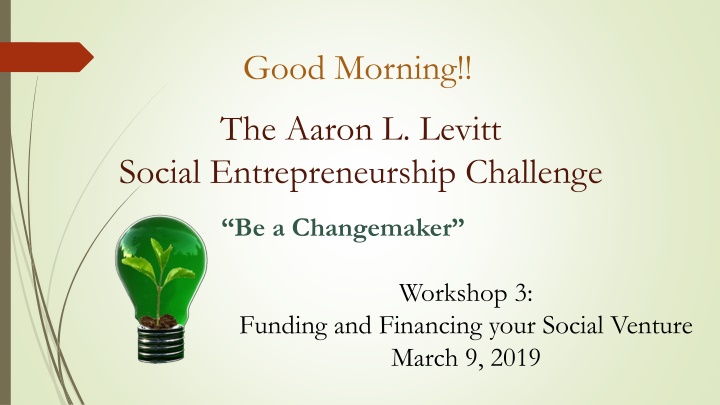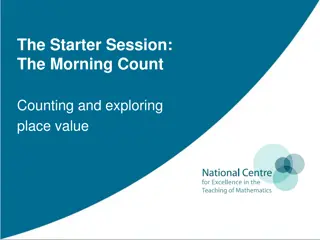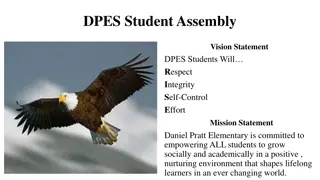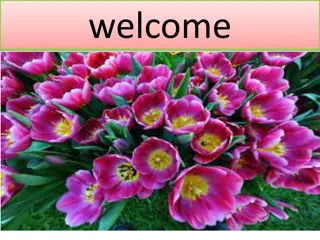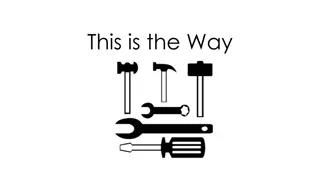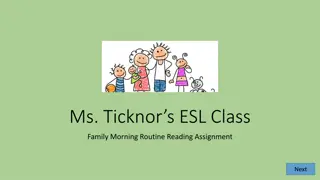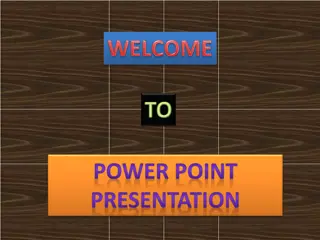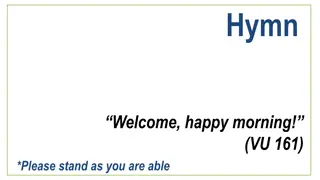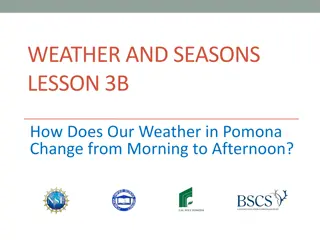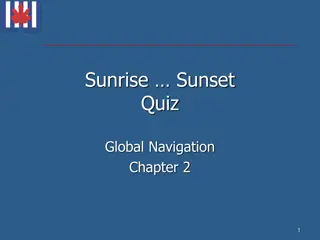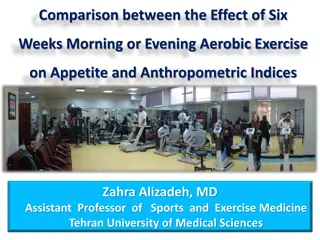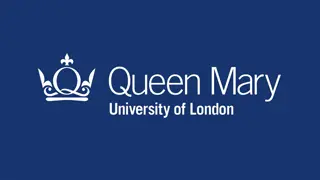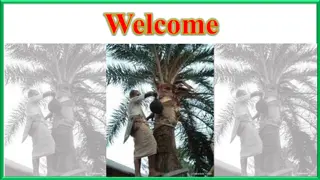Good Morning!!
Participate in the Aaron L. Levitt Social Entrepreneurship Challenge workshops to learn about funding, financing, and developing new enterprises. Gain insights into capital structure, business plans, and revenue models to enhance your social venture. Join us in creating impactful presentations and dynamic business plans. Prepare for the Midwest Symposium on Social Entrepreneurship and be a part of this transformative journey.
Download Presentation

Please find below an Image/Link to download the presentation.
The content on the website is provided AS IS for your information and personal use only. It may not be sold, licensed, or shared on other websites without obtaining consent from the author.If you encounter any issues during the download, it is possible that the publisher has removed the file from their server.
You are allowed to download the files provided on this website for personal or commercial use, subject to the condition that they are used lawfully. All files are the property of their respective owners.
The content on the website is provided AS IS for your information and personal use only. It may not be sold, licensed, or shared on other websites without obtaining consent from the author.
E N D
Presentation Transcript
Good Morning!! The Aaron L. Levitt Social Entrepreneurship Challenge Be a Changemaker Workshop 3: Funding and Financing your Social Venture March 9, 2019
Welcome to Todays Session Agenda: A) Upcoming Levitt Program Activities B) Reporting Out: Each person/team is to present a succinct explanation of their social venture and logic model (maximum of five minutes per venture!!) C) Brief Introduction to Capital Structure and the Core Elements of a Useful Business Plan D) Funding, Financing, and New Enterprise Development E) Revenues, Revenue Models, and Funding F) Questions and Discussion
The May Levitt Challenge March 30: Workshop #4 Preparing Dynamic Business Plans April 11: Business Plan Drafts Due CANNOT BE LATE April 22: Business Plan Drafts returned May 3: Final Business Plan Due again CANNOT BE LATE May 4: Workshop #5 Creating Presentations with Impact and Sizzle May 13, 2019: The Midwest Symposium on Social Entrepreneurship, including Aaron L. Levitt Social Entrepreneurship Challenge program on Monday, May 21 2019
Lets Hear From You! Each project has a maximum of five minutes to present a succinct explanation of the social venture and the key elements of its underlying logic model.
Funding, Financing, and New Enterprise Development
Dual Bottom Line Matrix 6 High Mission Low Sustainability High Mission High Sustainability Low Mission Low Sustainability Low Mission High Sustainability Mission Impact Financial Sustainability Midwest Center for Nonprofit Leadership / UMKC
Nonprofit Resource Considerations Consistent with Strategy Program Stability Capital Structure Restriction Transaction Cost
Understanding Financial Resources Revenue: Monies from contracted services, fees for service, commercial activity Medicare Tuition Capital: All other monies donated to support mission delivery activities Individual donations Grants
2015 Contributions: $373.2 billion by source of contributions (Giving USA)
Individual Giving 1975 - 2015 Giving USA
Foundation Giving 1975 - 2015 Midwest Center for Nonprofit Leadership
2015 Contributions: $373.2 billion by type of recipient organization (Giving USA)
Sources of Revenue (for public charities in US, 2014: NCCS) Fees for goods & services: 72.0% Fees from private sources: 47.5% Fees from government sources: 24.5% Public support : 21.3% Private contributions: 13.3% Government grants: 8.0% Investment income: 4.8% Other income: 1.9% Midwest Center for Nonprofit Leadership
A Different Perspective Revenue Type Beneficiary Restriction Fee-for-service income Individual Tied to service Foundation /Philanthropy dollars Collective to groups Temp Restricted/Unrestricted Government/Philanthropy dollars Society wide Temp Restricted/Unrestricted Corporation dollars Corporations and nonprofits Unrestricted From Dennis Young, Financing Nonprofits.
Capital Facilities Working Permanent Social ???
Sources of Capital Grants Gifts and Donations Debt Loans Bonds
University of Missouri Kansas City Understanding Revenues and Revenue Models Midwest Center for Nonprofit Leadership at UMKC
Revenue Model (or Funding Model) Revenue Type A The Work of the Organization Revenue Type B Revenue Type C Midwest Center for Nonprofit Leadership at UMKC
Key Elements of Revenue Model The Specific Type(s) of Revenues(s) The Adequacy of the Total Revenue The Characteristics of the Revenue(s) The Mix of Revenue Types Balance Diversity Midwest Center for Nonprofit Leadership at UMKC
Key Revenue Model Considerations Degree of Financial Independence (especially, associated with source) Capital Structure Nature of Assets Funding Dynamics How Resources Come In (Flow, Timing, etc.) Midwest Center for Nonprofit Leadership at UMKC
Capital Structure The nature of the venture s financial Assets Liabilities Net assets Need to understand in terms of: Adequacy and alignment of assets you have and what you will need Diversity and Liquidity (esp. restriction and fixedness) Risk that is inherent in the capital structure you design Trends and changes that may alter the above Midwest Center for Nonprofit Leadership at UMKC
Nature of Assets Fixity of Asset Type Low Medium High Unrestricted Cash Building Level of Temporary Restricted Restriction Permanently Restricted Endowment Donated Special- Use Facility Midwest Center for Nonprofit Leadership at UMKC
Funding Dynamics Reliability: Extent to which revenue source is consistent and predictable year to year. Range from Low to Medium to High Autonomy: Degree of restriction and/or enforceable conditions on the use of funds Range from Low to Medium to High Midwest Center for Nonprofit Leadership at UMKC
Reliability and Autonomy Level of Autonomy Low Medium High One-year government project grant Unrestricted Bequest Low Level of Reliability Medium Small regular contributions High Restricted endowment Midwest Center for Nonprofit Leadership at UMKC
Potential Revenue Types A Few of the Options Ad Hoc Donations Gifts of Cash Gifts of Property Grants: Foundation Grants: Governmental Department Grants: Governmental Earmarks Endowment Income Dedicated Governmental Revenues: Taxes & Levies Earned Income: Fees for Service Earned Income: Contracts for Services Earned Income: Trade/Sales Debt: Commercial Debt: Bonds Midwest Center for Nonprofit Leadership at UMKC
Characteristics For Each Type of Revenue, Need to Understand the Implications of: Source(s) How the Revenue Flows In Revenue Reliability Revenue Autonomy Drivers of Revenue from the Source Associated Risks Midwest Center for Nonprofit Leadership at UMKC
Just Asking What do you envision will be the source(s) of financial support for your venture?
